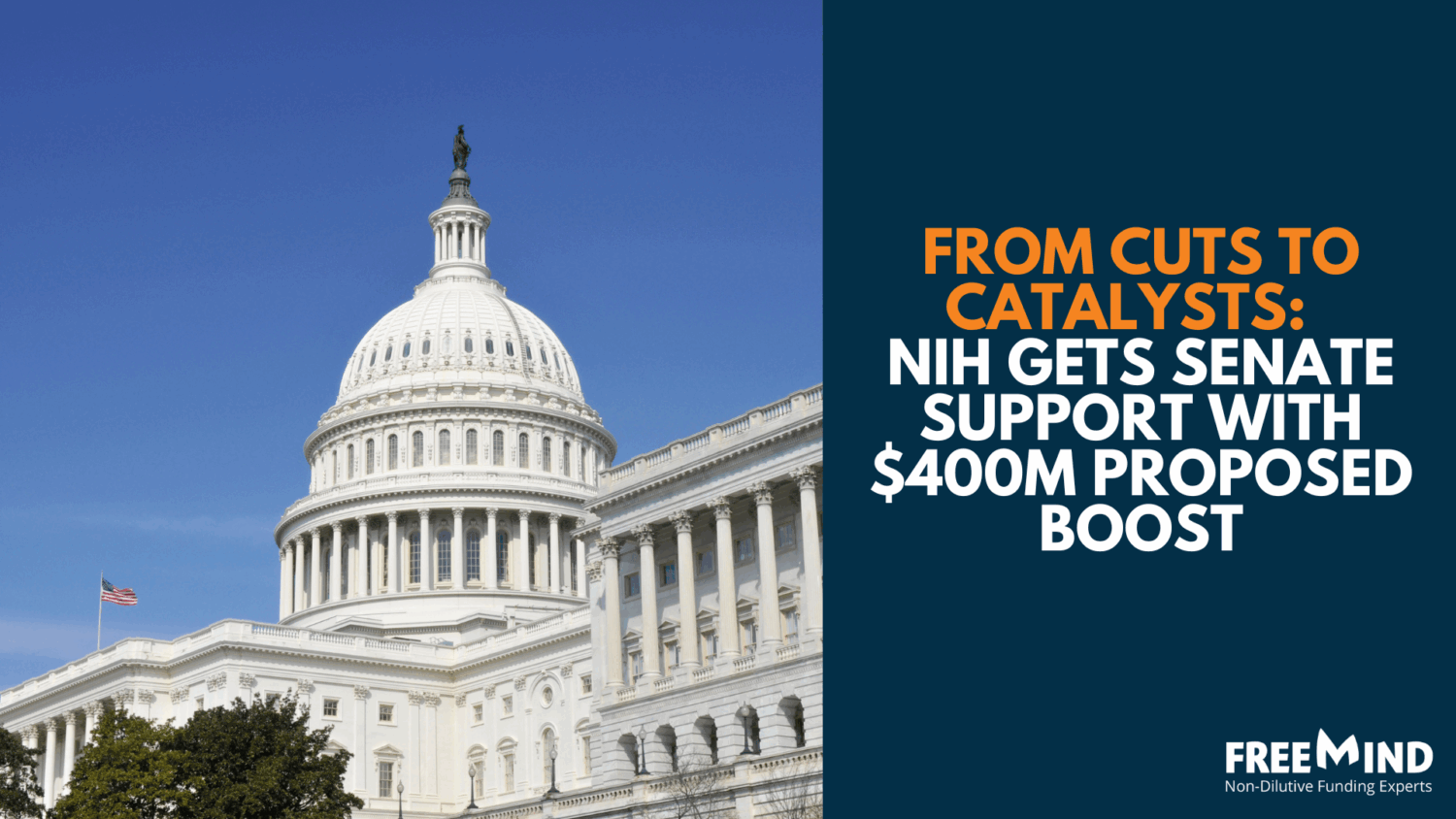From Cuts to Catalysts: NIH Gets Senate Support with $400M Proposed Boost
From Cuts to Catalysts: NIH Gets Senate Support with $400M Proposed Boost
By Ram May-Ron, Managing Partner, FreeMind Group
The federal funding landscape for biomedical research is once again in the spotlight as recent Senate proposals signal a renewed commitment to supporting the life sciences. These developments offer both reassurance and opportunity for early-stage and established companies alike, especially during a time when private capital is harder to come by.
A Renewed Commitment to Biomedical Research
At the forefront of these proposals is Republican Chairwoman Senator Susan Collins, who has made a strong case for sustained investment in health research. “This bill prioritizes funding to help make Americans healthier and supports lifesaving biomedical research, including through targeted funding for Alzheimer’s, cancer, Lyme disease, Parkinson’s, ALS, diabetes and rare disease research,” she affirmed.
Her committee’s proposed legislation calls for a $400 million increase in funding for the National Institutes of Health (NIH), bringing the NIH’s total budget to $48.7 billion under the Labor, Health and Human Services, Education, and Related Agencies Appropriations Act. This move diverges sharply from earlier budget proposals by President Trump, which had suggested cuts to NIH funding. Instead, it reasserts NIH’s position as the leading public funder of biomedical research in the world.
Strategic Allocations Across Federal Agencies
The proposed funding increase doesn’t stop at NIH. Several other critical agencies and programs are also poised to benefit:
- National Cancer Institute: $7.4 billion
- Biomedical Advanced Research and Development Authority (BARDA): $1 billion
- Project BioShield (bioterrorism countermeasures): $825 million
- Administration for Strategic Preparedness and Response (HHS): $3.6 billion
These targeted allocations reflect a strategic emphasis on preparedness, innovation, and disease-specific research, reinforcing the federal government’s role in advancing public health and national security.
A Crucial Moment for Early-Stage Innovators
One of the most promising elements of the proposal is the potential increase in funding for the Small Business Innovation Research (SBIR) program. Indications suggest that not only will the program be extended, but it may also see enhanced allocations – welcome news for early-stage companies focused on high-impact R&D.
Given today’s volatile funding climate – marked by venture capital slowdowns, reduced IPO activity, and fewer M&As – federal funding is no longer a backup plan; it’s a vital path forward. Strategic alignment with federal research priorities can enable companies to secure the capital needed to survive and thrive.
Strategic Takeaways: Prepare, Align, and Act
While it is unlikely that either President Trump’s proposed cuts or the full Senate committee’s increases will be enacted as-is, the real takeaway here is the return of clarity and confidence in the future of federal biomedical research funding.
Now more than ever, companies should be:
- Building a multi-submission strategy
- Pursuing all applicable grant and contract opportunities
- Aligning with NIH and agency research priorities
A well-prepared and diversified submission plan dramatically increases the likelihood of securing funding and sets the stage for long-term success.
FreeMind Group continues to support life science innovators through expert guidance in non-dilutive funding strategy. If you’re ready to take full advantage of these upcoming opportunities, we’re here to help you navigate the way forward.


